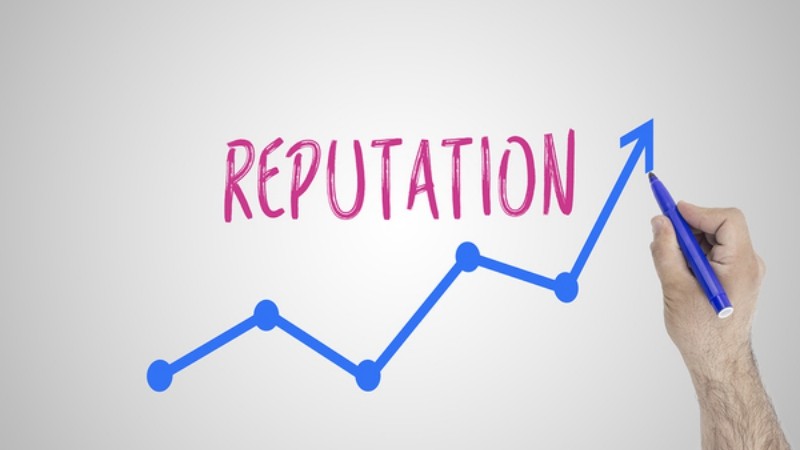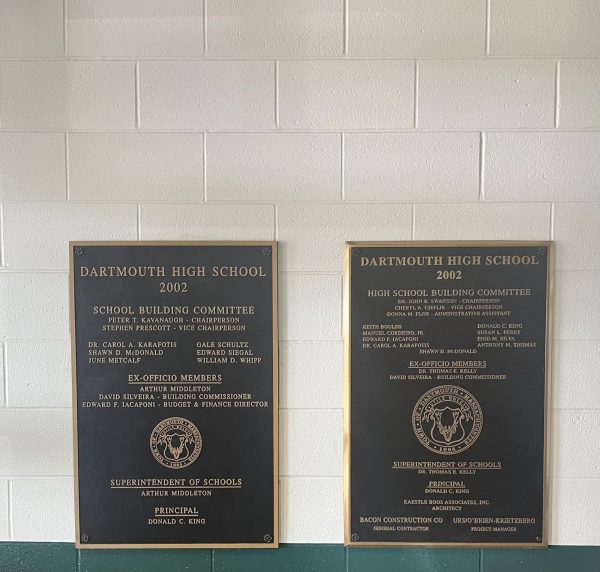The Paradox of the DHS Reputation
Reputation. A tool to be used for or against the wielder. A good reputation is a ticket to elite social circles and fast friends. A bad reputation hinders your ability to make deals, to be in rooms where decisions are made, from meeting the people you may need to. We avoid a bad reputation at all costs, because what if despite hard work and genuine intentions a bad reputation diminishes your credibility? Discounts your achievement thus far?
However, isn’t it more of a statement of your character if you can succeed despite a bad reputation? Isn’t it more genuine to do what is right regardless of its effects on public perception? Using reputation as a sole motivator is like becoming a heart surgeon for the salary; there should be a reason beyond external gratification. There needs to be an intrinsic drive. You don’t become a heart surgeon for a salary, you get the education and training to save lives. The same is true for progressive policies, which are instated for the sake of reputation. Principal Ryan Shea opened an assembly about school issues with racism with a personal anecdote about a citizen inquiring about what’s going on in his school. He went on to talk about how the DHS reputation is diminished by such aggression. Progressive policies shouldn’t be instated because you’re sick of people speculating your reputation in public places. It should be instated for the betterment of the lives of students who are affected by inaction. We, as a school community, assume we care about our reputation. Yet, the DHS reputation is riddled with contradictions, so one must wonder what are the implications of reputation?
The DHS reputation is fraught with personal opinions. Some view it as hostile towards minorities, and culturally offensive, due to the continued use of the mascot. The mascot was designed by a member of a local tribe, but it should also be remembered that the agreement that started the Trail of Tears was also technically made in collaboration with a member of a Native American tribe, which is to say, why should one voice in any case, represent an entire race? The “Dartmouth bubble,” also comes into play here, because many view some of the community as unaware of current issues and some of the members, especially those from Padanaram, as bourgeois, entitled, and privileged beyond their own awareness, yet these are also the same people that tend to hold the most power and voice. But it’s also undeniably the academic opportunity DHS boasts, the world-class music program, and wide selections of sports and extracurriculars. There seems to be an abundance of opportunities to succeed, to learn, to come into adulthood, yet some of the community seems crudely negligent to issues concerning race, sexuality, corruption, and equality.
As a society we strive for equality, DHS is no exception. Within the past year, clubs like Women Empowerment, Female Self Defense, and the Black Student Union joined the DHS community. Before that the Gender Sexuality Alliance was established. The BSU has received funding for progressive initiatives. Women Empowerment is in the process of adding feminine products to restrooms.
The new administration sparked hopes of transparency. “One Dartmouth” promised unity, but it alluded to the burgeoning issue of group homogeneity. We had all the signs of a burgeoning reputation of progressivism, yet this is hindered by internal grievances and deep-seated issues. Those who are close to the school have a more cynical view of the school community, witnessing first or second hand the controversies and conflicts. Such as an incident including an AirDrop of a racist slur and the several incidents of students not respecting their peers’ diversity, whether that be sexuality or race, through the use of hate speech. Positive initiatives have resulted such as the Text Advisory Panel and more honest conversations about where DHS stands as a progressive school, but these initiatives are often overshadowed. The mascot, here to stay, is still a representation of the DHS struggle to adapt with the modern world. The former president of the American Psychology Association said that American Indian mascots, especially ones used for sports teams, not only have negative effects on indigenous students, but all students. This is one point of sensitivity surrounding DHS of many. So how does the administration handle this? Should they address a reputation or deny it altogether? As is, we seem to be in a gray area between addressing controversy and the anachronistic policies of the previous administration.
According to a qualitative study published by International Journal of Social Sciences and Education investigating the effects of school reputation on students, the reputation of a public school, despite its socialist origins, is similar to that of a corporation. To avoid bad reputations companies today instate Environmental Social Governance policies, policies like going green and closing wage gaps, that are instituted for the betterment of the company socially, ethically, and environmentally. Management tracks and addresses company reputation ensuring workers believe their company is ethical. They liken management to head teachers of a school, people who are not the bearers of administrative power, but are in a position to address the existence of reputations, therefore, being able to get bad reputations fixed through talks with administrators. However, out of fear of pushback and little incentive, this linear business structure is often inapplicable. The role of management and head teacher is, according to the study, “to reveal all hidden facts, especially concerning the social image of schools to draw a pathway in reputation building.” Such a system of addressing issues would discount reputation as the sole motivator for change, adding personal ethos to issues and a true desire for a safe community for all students. For there to be some management of reputation is critical to schools. The study finds when a school has an unfavorable reputation, both teachers and students lessen participation in school.
Like Environmental Social Governance policies, many speculate if a management system like this would be primarily reactionary, only addressing issues once they’ve occurred. But, quite frankly, the goal of addressing issues would be to prevent recurrent cases. We have little accurate gauge of what the DHS reputation actually is, other than seldom personal anecdotes that are often contradictory. The Michigan Association of Superintendents & Administrators surveyed parents’ opinions about numerous opinions on how they thought the school handled certain issues. This is not dissimilar to the survey students completed during a previous PASE. However, the Michigan Association of Superintendents & Administrators had a baseline to compare the results to previous results. This could properly gauge how opinion on school reputation compared to that of years past. The survey, although with good-intentions, had no baseline, nullifying the results from any real conclusions. Other than majority opinions, which when it comes to the issue of race or equality, is not particularly useful. If 81 percent of the school is white, there is a greater chance that the majority of the school community thinks there are no equality issues, because the majority of the school wouldn’t experience the effects of an issue.
Although unfortunate, the reputation of the school will always have a stake in administrative reaction. It affects how students and the community interact with the school. Therefore progressivist policies in the school can never be entirely altruistic, but a level of humanity can be added. A bad reputation encourages a reflexive reaction to get rid of it, to silence the issue, and to move on. Aforementioned studies suggest this may be positive in the short term; however, for a long term positive relationship between the school, its reputation, and community, reasons for a bad reputation must be addressed and readdressed. There would need to be a systematic approach to school image issues, including a categorization of reported issues, so we can truly see what issues tend to have a higher concentration of complaints, and if change creates a pattern of less reporting. Open communication about what the administration plans to do when issues aggregate would also be fundamental to such a management system. When things aren’t uniform, issues can be ignored and mishandled because there is no solid precedent. Without a true system to address issues that includes a variety of stakeholders, we cannot expect to see change in reputation or student satisfaction.











